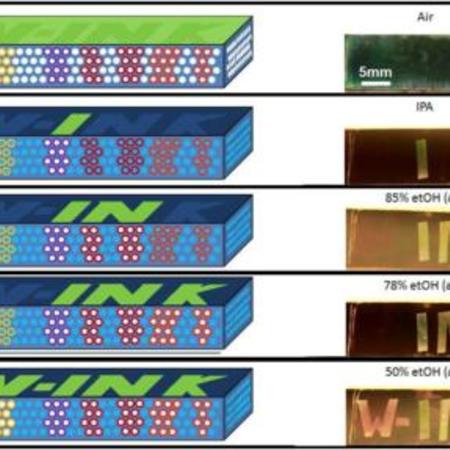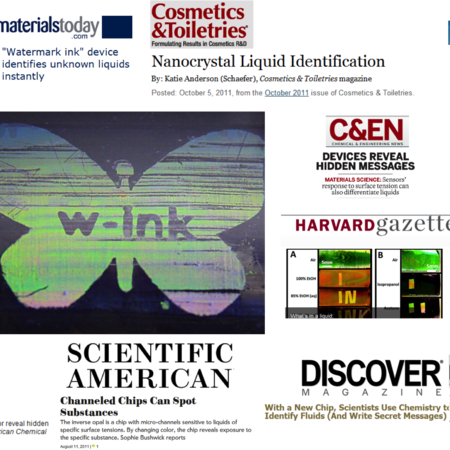Burgess IB, Loncar M, and Aizenberg J. Structural Colour in Colourimetric Sensors and Indicators. J. Mater. Chem. C. 2013;1 (38) :6075-6086. Publisher's VersionAbstract
Colourimetric sensors and indicators are widely used because of their low cost and simplicity. A significant challenge associated with the design of this type of device is that the sensing mechanism must be simultaneously optimised for the sensitivity of the response and a visually perceptible colour change. Structural colour, derived from coherent scattering rather than molecular absorption, is a promising route to colourimetric sensor design because colour shifts are tied to changes in one of many physical properties of a material, rather than a specific chemical process. This Feature Article presents an overview of the development of low-cost sensors and indicators that exploit structural colour. Building upon recent advances in structurally adaptive materials design, structural colour sensors have been developed for a wide variety of previously inaccessible physical (e.g. temperature, strain, electric fields) and chemical stimuli (e.g. small organic molecules, charged species, biomacromolecules and metabolites). These devices, often exceeding the state of the art in performance, simplicity or both, have bright prospects for market impact in areas such as environmental monitoring, workplace hazard identification, threat detection, and point-of-care diagnostics. Finding the ideal balance between performance (e.g. sensitivity, specificity, reproducibility, etc.) and simplicity (e.g. colourimetric vs. spectroscopic readout) will be one of the most critical elements in the further development of structural colour sensors. This balance should be driven largely by the market demands and competing technologies.

